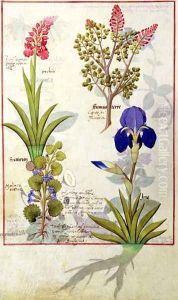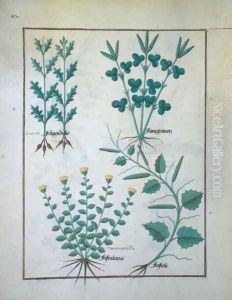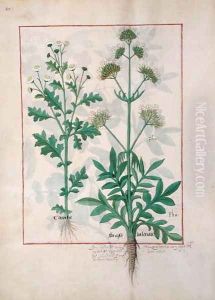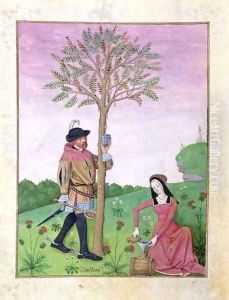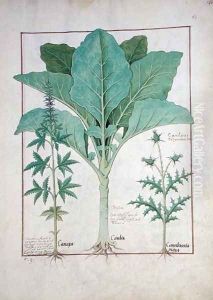





Cannabis, Brassica and Thistle, Illustration from the Book of Simple Medicines by Mattheaus Platearius d.c.1161 c.1470
-
About Reproduction
Discover the allure of art with our faithful reproduction of "Cannabis, Brassica and Thistle, Illustration from the Book of Simple Medicines by Mattheaus Platearius d.c.1161 c.1470", originally brought to life by the talented Robinet Testard. Unlike posters or prints, our hand-painted oil painting breathes an unique sense of depth and texture into your space. Every detail, every stroke, and every texture is meticulously recreated, paying the perfect homage to Robinet Testard and his artistic vision.
Owning this piece is more than just decoration - it's a statement of your refined taste in art. Let the vibrant colors and intricate details of this replica serve as a daily reminder of the beauty in our world. Elevate your decor and appreciate the richness of art with our replica of this masterpiece.
-
Painting Description
The "Cannabis, Brassica and Thistle, Illustration from the Book of Simple Medicines" is a notable work attributed to Robinet Testard, an illustrator active during the late 15th century. This illustration is part of the "Book of Simple Medicines," a medieval herbal compendium originally authored by Mattheaus Platearius, a physician from the renowned medical school of Salerno, who lived until circa 1161. The manuscript itself dates back to around 1470, reflecting the enduring influence of Platearius' medical knowledge and the artistic contributions of Testard.
Robinet Testard, known for his detailed and vibrant illuminations, brings to life the medicinal plants described by Platearius. The illustration features three distinct plants: Cannabis, Brassica (commonly known as cabbage), and Thistle. Each plant is meticulously rendered, showcasing Testard's skill in botanical illustration and his ability to convey the practical and medicinal significance of these plants through art.
Cannabis, depicted in the illustration, was historically valued for its medicinal properties, including pain relief and anti-inflammatory effects. Brassica, or cabbage, was widely used in medieval medicine for its purported benefits in treating digestive issues and wounds. Thistle, another plant illustrated by Testard, was commonly employed for its liver-protective properties and as a remedy for various ailments.
The "Book of Simple Medicines" serves as a crucial link between ancient herbal knowledge and the Renaissance's burgeoning interest in natural sciences. Testard's illustrations not only enhance the manuscript's aesthetic appeal but also provide a visual guide to the plants' identification and use. This work exemplifies the intersection of art and science during the medieval period, highlighting the importance of botanical knowledge in historical medical practices. Through Testard's artistry, the enduring legacy of Platearius' medical insights is preserved and continues to be appreciated by scholars and enthusiasts of medieval medicine and art.
-
Lead Time & Shipping
When you order this oil painting replica, it typically takes 2-3 weeks to paint. If the artwork is more complex, it might need a little more time to ensure the best quality. Once it's ready, we'll send you a photo for your approval. After you give the green light, we'll ship it to you for free.
-
Return & Refund
We believe in the quality of our hand-painted oil painting reproductions, and your satisfaction is our priority. If for any reason, you are not completely satisfied with your purchase, we offer a 45-day return policy. You can return your artwork within 45 days of receipt and receive a full refund. Please note that the artwork must be returned in the original packaging and in the same condition as it was received.







